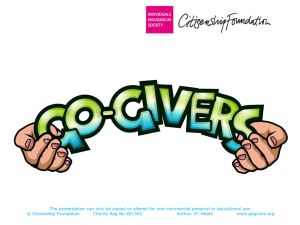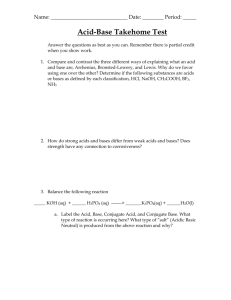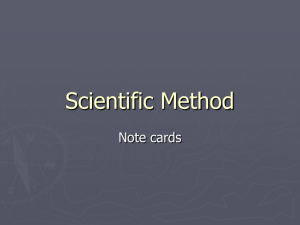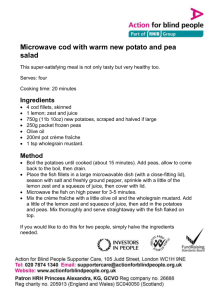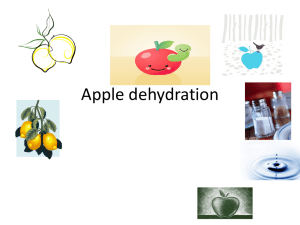Invisible Ink Experiment Safety and First Aid
advertisement
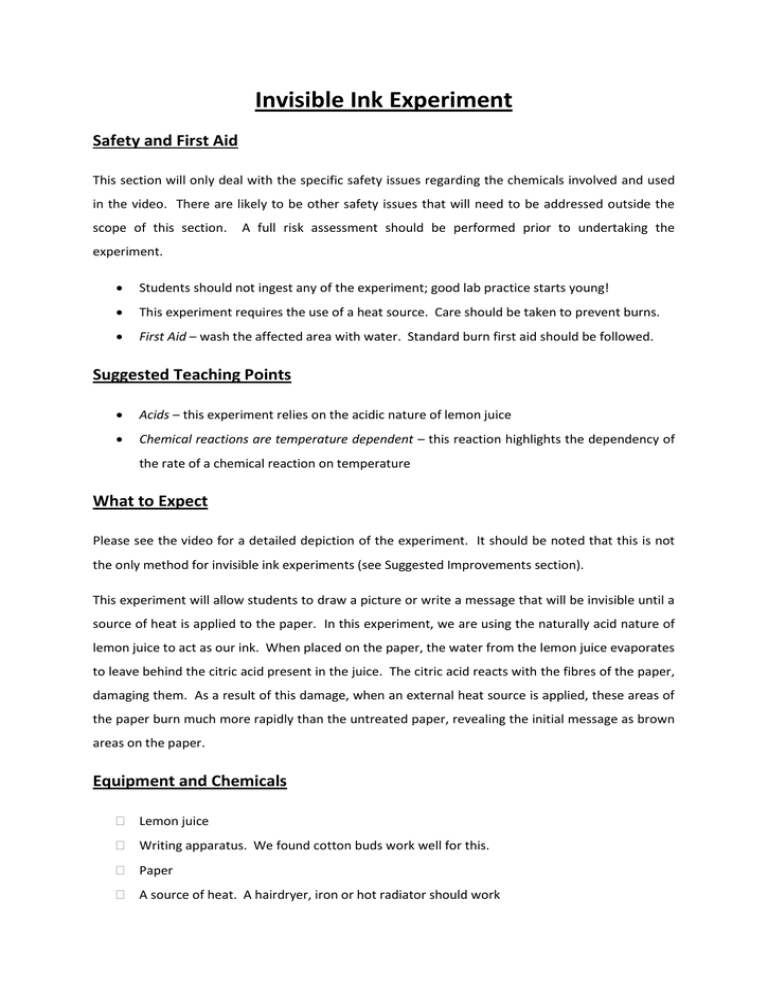
Invisible Ink Experiment Safety and First Aid This section will only deal with the specific safety issues regarding the chemicals involved and used in the video. There are likely to be other safety issues that will need to be addressed outside the scope of this section. A full risk assessment should be performed prior to undertaking the experiment. Students should not ingest any of the experiment; good lab practice starts young! This experiment requires the use of a heat source. Care should be taken to prevent burns. First Aid – wash the affected area with water. Standard burn first aid should be followed. Suggested Teaching Points Acids – this experiment relies on the acidic nature of lemon juice Chemical reactions are temperature dependent – this reaction highlights the dependency of the rate of a chemical reaction on temperature What to Expect Please see the video for a detailed depiction of the experiment. It should be noted that this is not the only method for invisible ink experiments (see Suggested Improvements section). This experiment will allow students to draw a picture or write a message that will be invisible until a source of heat is applied to the paper. In this experiment, we are using the naturally acid nature of lemon juice to act as our ink. When placed on the paper, the water from the lemon juice evaporates to leave behind the citric acid present in the juice. The citric acid reacts with the fibres of the paper, damaging them. As a result of this damage, when an external heat source is applied, these areas of the paper burn much more rapidly than the untreated paper, revealing the initial message as brown areas on the paper. Equipment and Chemicals Lemon juice Writing apparatus. We found cotton buds work well for this. Paper A source of heat. A hairdryer, iron or hot radiator should work Supplementary Instructions Do not use an excessive amount of lemon juice while writing the message. Allow the lemon juice chance to dry before moving the paper so as not to smudge the message. The length of time needed to heat the paper will depend on the source of heat. Be careful with the length of time heat is applied. Excessive heating will cause the untreated paper to burn and obscure the message. Suggested Questions for Students Is lemon juice invisible ink a good method for secret messages? – students could discuss various aspects of the experiment and decide if this is a good method for transmitting a secret message. Some possible points of discussion are the simplicity, the irreversible nature of the process, etc. How does lemon juice invisible ink work? – see What to Expect section Why is this process irreversible? – this ink is visualised because the paper burns in the areas that have been treated with lemon juice. Combustion is an irreversible process and so once the ink has been developed, it cannot be undone. Suggested Improvements / Student Challenge Investigate alternative heat activated ‘inks’ – there are numerous alternatives to lemon juice that can be used as the ink. Any solution that is acidic (i.e. vinegar, cola, other fruit juice) will have a similar effect to that of lemon juice when the paper is heated. Investigate UV black light activated ink – tonic water could be used as the ink and a UV black light used to visualise the ink. This method has the advantage that, once the UV black light is removed, the message will be invisible again. Investigate pH activated ink – the use of a pH indicator solution could be used to visualise the message. An acidic (e.g. lemon juice) or basic (e.g. baking soda) solution could be used as the ink. To visualise the message, a pH indicator solution (see the Cabbage Indicator video) could be painted over the paper. The pH indicator will change colour where the message was written. Investigate experiment variables – students could investigate various aspects of the experiments to determine their overall effect on the outcome (e.g. amount of lemon juice used, length of time heat is applied for, length of time the paper is allowed to drive before heat is applied) Clean up and Waste Disposal No specific waste disposal protocols are required for this experiment; all waste can be washed down the sink with water or disposed of in a bin. Spillages can be cleaned with water and paper towel.
